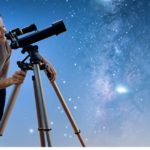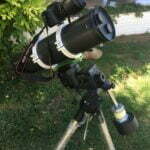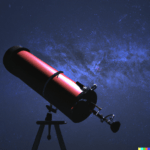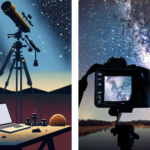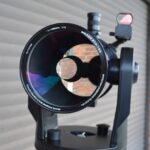Table of Contents
Immerse yourself in the beauty of the cosmos with astronomy wall art. This captivating form of home decor brings the wonders of the universe into your home. In this article, we will look at the world of astronomy art and how it can transform your home.
Understanding Astronomy Wall Art
Astronomy wall art celebrates the magnificence of the universe. It features captivating images of celestial bodies, space-themed designs, and stunning cosmic landscapes. From astronomical photographs to artistic renditions, astronomy wall art offers so much! It is a unique way to appreciate and showcase the wonders of space.
Take a look at this selection of Space Wall Art (Amazon). If you buy through this link, I may receive a small commission.
Different Choices for your Wall Art
There are a few different mediums to choose from when you want the perfect astronomy wall art. Here they are:
- Photographic print on canvas paper.
- Acrylic print (for more depth and enhancement of the image)
- Metal prints are more durable and preserve the image longer.
In terms of price, they are listed in the order above from cheapest to most expensive.
Exploring the Beauty of Astronomy Art
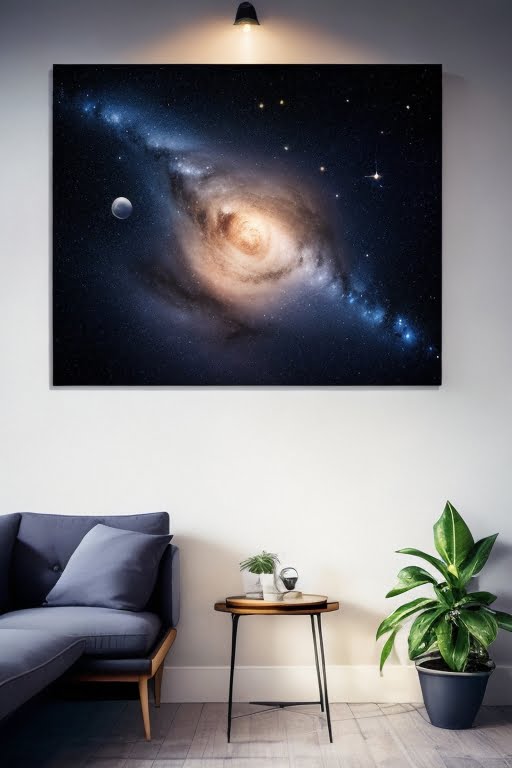
Astrophotography wall art captures the essence and allure of the universe. Enjoy breathtaking images of distant galaxies, mesmerising nebulae, and majestic planets. This kind of art brings the vastness of space to your walls. Each piece of artwork tells a separate story. This provides a sense of wonder and awe that invites you to explore the mysteries beyond our planet.
Incorporating Astronomy Art in Home Decor
Astronomy wall art in your home lets you display your fascination with the cosmos. You can choose a single focal piece or a curated collection.
Astronomy-inspired artwork can serve as a conversation starter. It adds depth, character, and a touch of the extraordinary to any room.
As well as wall art, there are other interesting options to add space art to your home. Astronomy wallpaper, moon wall art, constellation wall art, and space wall art, nursery style! Astronauts look great on the wall, too!
Choosing the Right Astronomy Pictures
When selecting astronomy art, consider your personal taste. The art you hang on your walls says a lot about who you are. It’s also important to consider the ambiance you wish to create.
You can choose from a variety of art styles. These include realistic photographs, abstract interpretations, and vintage-inspired prints. Consider the size, colour palette, and theme of the artwork. Make sure that the art you choose complements your existing decor.
Astronomy Art as a Gift
Astrophotography wall art makes a thoughtful and unique gift. It’s especially suitable for astronomy enthusiasts and space lovers.
Presenting someone with a piece of space wall art can be a great idea.
This kind of art demonstrates your understanding of their passion for the cosmos. Consider personalising your gift by selecting artwork that has some personal significance. A favourite planet or constellation is a good choice.
Showcasing Astronomy Art in Offices and Public Spaces
Space art is also a beautiful addition to offices, public spaces, and educational institutions. By displaying these artworks, you can stimulate curiosity and inspire creativity. Astronomy wall art creates engaging environments that create an incredible ambiance.
Caring for and Maintaining Astronomy Wall Art
To preserve the beauty and longevity of astronomy wall art, proper care is essential. Avoid exposure to direct sunlight, as it may fade the colours over time. Dust the artwork using a soft, lint-free cloth. For framed pieces, handle them with care and ensure they are securely mounted on the wall. Simple maintenance like this will help you enjoy your astronomy wall art for years to come.
The Growing Popularity of Astronomy Wall Art
Astronomy wall art has gained significant popularity among contemporary decor trends. With the rise of online marketplaces and independent artists, there are now a wide variety of options available. There is a choice of art to suit different tastes and budgets. Whether you prefer something bold or subtle, astronomy wall art looks great in any space. Here are examples of astrophotography images that I have photographed.
Conclusion
Astronomy wall art is a gateway to the wonders of the universe. It allows you to appreciate the beauty of space from the comfort of your home. Adding astronomy-inspired artwork creates a sanctuary that reflects your love for the cosmos.
Explore the vast selection of astronomy wall art and choose pieces that resonate with you. Embark on a visual journey through the galaxies.


